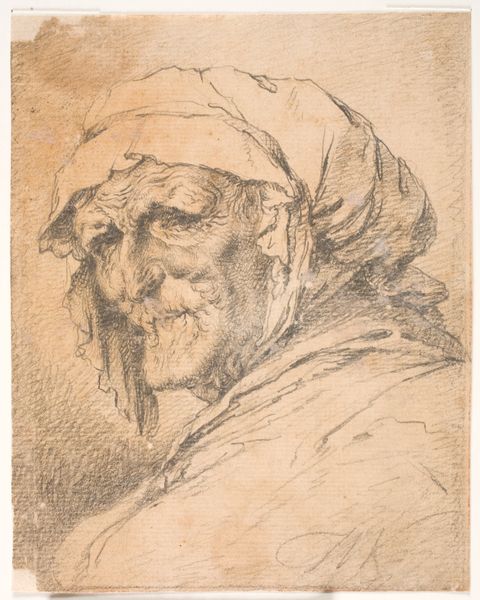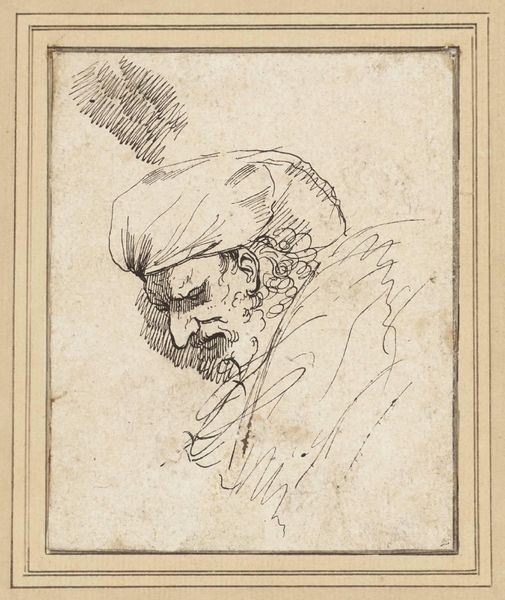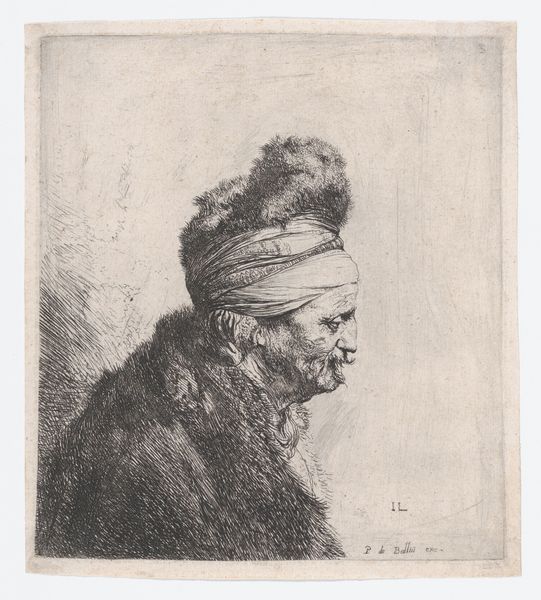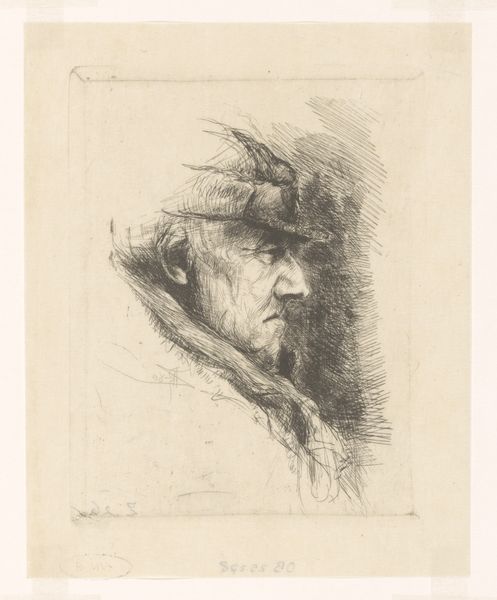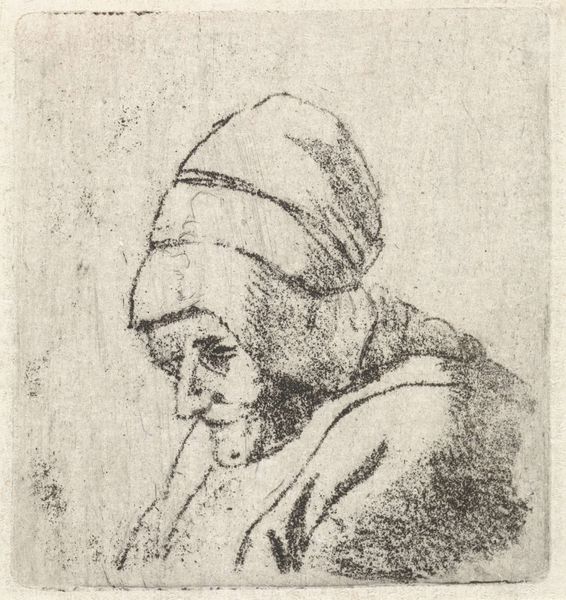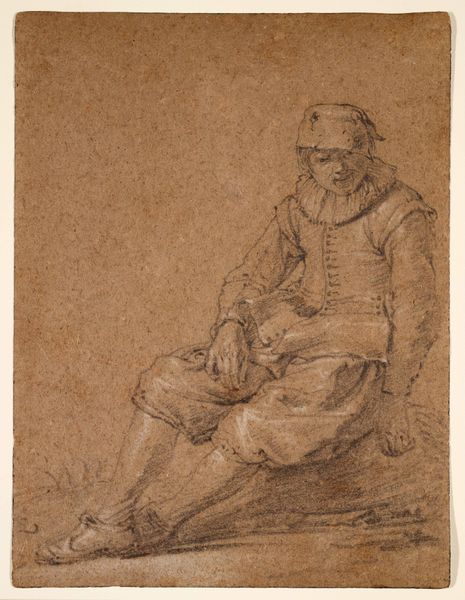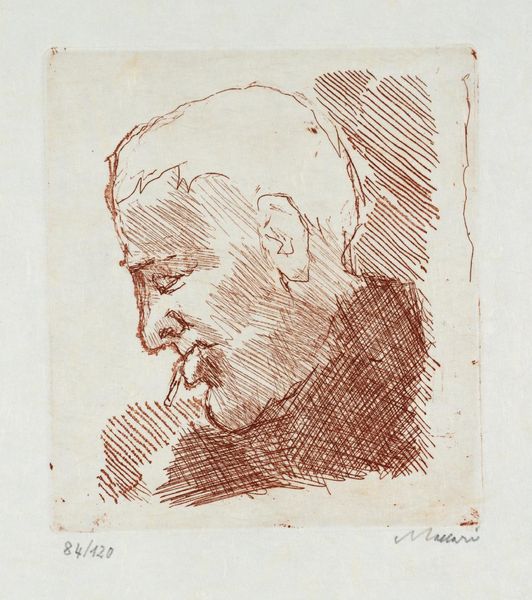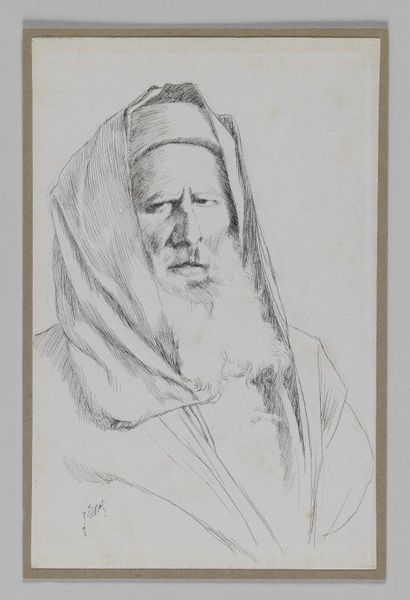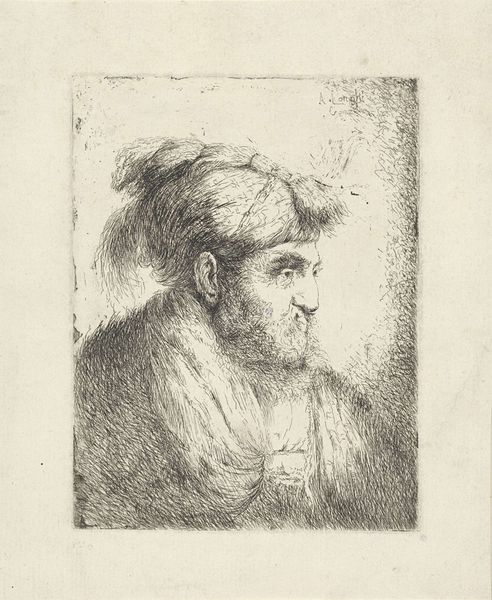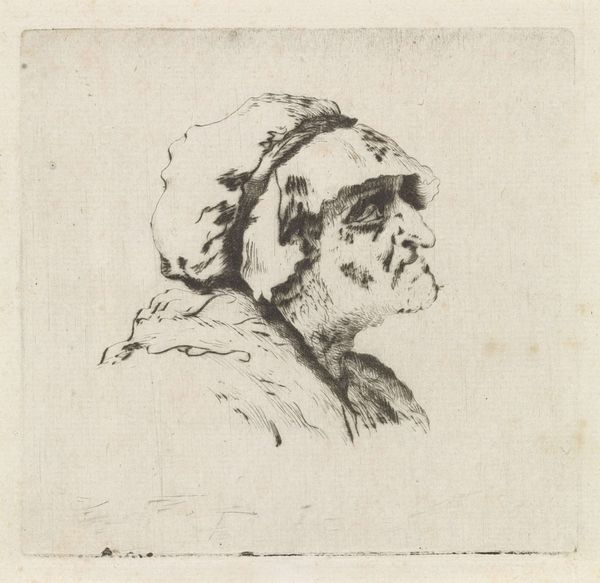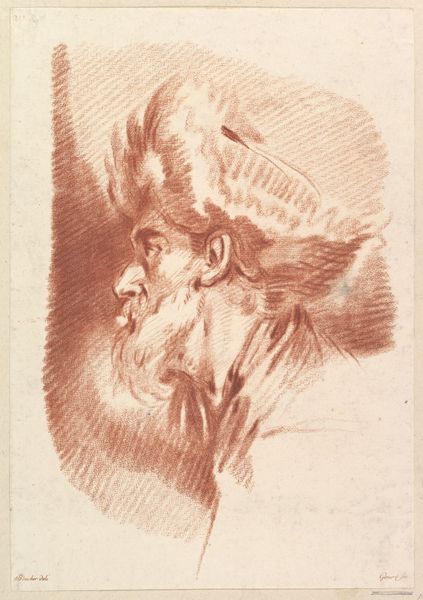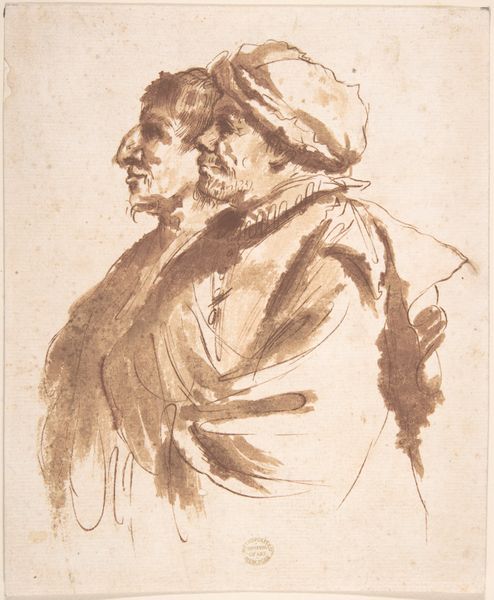
Dimensions: support: 93 x 89 mm
Copyright: CC-BY-NC-ND 4.0 DEED, Photo: Tate
Editor: This is Thomas Worlidge's "Caricature Head in Imitation of Van Ostade: Woman in Cap to Left," a delicate drawing from the 18th century, residing in the Tate. I find the woman's face quite striking, almost grotesque. What can you tell me about its context? Curator: This drawing participates in a broader 18th-century fascination with caricature and the picturesque. The 'low-life' subject matter references Van Ostade, but Worlidge's choice reflects the period's complex relationship with class and representation. How do you think the act of imitation plays into this? Editor: That's fascinating. It seems like imitation allows Worlidge to both engage with and perhaps distance himself from the subject matter. I hadn't considered the social implications so directly. Curator: Exactly. Thinking about the public role of caricature helps us understand the political dimensions of imagery during the Enlightenment. Something I'll keep in mind. Thanks!
Comments
tate 7 months ago
⋮
http://www.tate.org.uk/art/artworks/worlidge-caricature-head-in-imitation-of-van-ostade-woman-in-cap-to-left-t08621
Join the conversation
Join millions of artists and users on Artera today and experience the ultimate creative platform.
tate 7 months ago
⋮
These two caricature heads, of an old man and woman, are in the style of a seventeenth-century Dutch artist, Adriaen van Ostade. Ostade was known for his paintings of drunken men and wizened old peasants. His work was increasingly admired in eighteenth-century England. Worlidge was most renowned for his imitations of Rembrandt, whose prints he also copied. Although Worlidge made large portraits in oils, he often worked in miniature. He learnt this skill from an itinerant Italian artist, AM Grimaldi, whose daughter he married. Gallery label, September 2004
